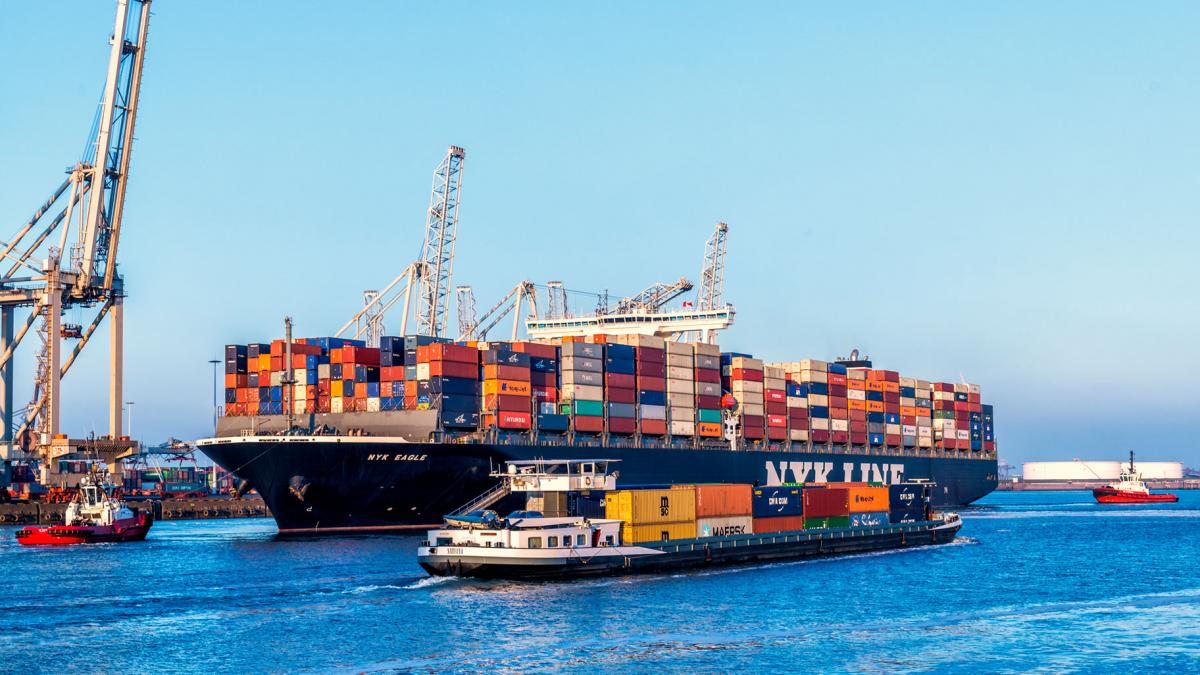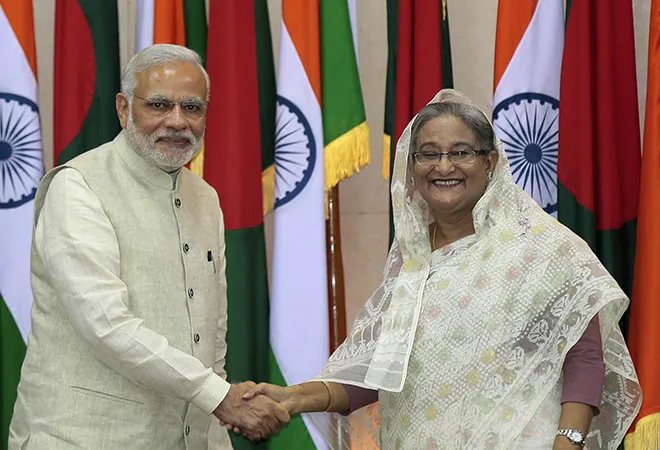Bangladesh, India launch trade transactions in Rupees in 2023

Bangladesh, and India launch trade transactions in Rupees in 2023
Bangladesh and India on Tuesday launched a much-anticipated trade transaction in rupees, a move aimed at reducing dependence on the US dollar and strengthening regional currency and trade.
Bangladesh has achieved a significant milestone by engaging in bilateral trade settlements with a foreign country using a currency other than the US dollar. This development marks the first time Bangladesh has engaged in such trade arrangements. The Governor of Bangladesh Bank, Abdur Rouf Talukder, expressed his optimism and described this initiative as the initial step towards a promising future.

The trade relationship between India and Bangladesh has witnessed remarkable growth, with both countries reaping the benefits of their economic cooperation. Governor Talukder acknowledged the positive trajectory of the trade position between the two nations. His comments were made during a launching ceremony held to mark the beginning of trade settlement in Indian rupees.
The ceremony was attended by the Indian High Commissioner to Bangladesh, Pranay Verma, underscoring the significance and bilateral nature of this trade initiative. The presence of the Indian High Commissioner indicates the mutual commitment to strengthening economic ties and enhancing cooperation between the two neighboring countries.
The move to settle trade in rupees opens up new avenues for facilitating commerce and improving trade relations between India and Bangladesh. By diversifying the settlement currency, both countries can potentially reduce transaction costs, enhance trade efficiency, and foster increased bilateral trade volumes. This step demonstrates the willingness of Bangladesh to explore alternative trade mechanisms and signifies a growing level of economic integration and collaboration with India.

This development not only reflects the evolving economic landscape in the region but also paves the way for further exploration of trade settlement options between Bangladesh and other foreign partners. It demonstrates Bangladesh’s commitment to expanding its trade relationships and exploring new opportunities to foster economic growth and development.
Overall, the initiation of trade settlement in rupees between India and Bangladesh represents a significant milestone and a positive step forward in their bilateral economic cooperation. It is an encouraging sign for both countries and holds the potential to strengthen trade ties, promote economic integration, and unlock further avenues for mutual prosperity.
The central bank governor of Bangladesh highlighted that the introduction of the Taka-Rupee dual currency card would lead to a reduction in transaction costs during trade with India. This initiative is expected to be launched from September and aims to streamline and facilitate trade transactions between the two countries.
Currently, Bangladesh and India engage in semi-formal frontier trading in specific areas known as “border huts.” In these areas, limited-scale trading takes place, and both currencies, the Taka and the Rupee, are exchanged. However, with the formal arrangement now in place, trade between Bangladesh and India will initially be transacted in Indian Rupees. As the trade gap between the two countries decreases over time, there are plans to gradually transition towards using the Bangladeshi currency, the Taka.
The introduction of the Taka-Rupee dual currency card is expected to simplify trade settlements and enhance efficiency. By providing a dedicated payment mechanism, it will reduce the need for multiple conversions and associated costs. This step reinforces the commitment of both countries to facilitate and promote bilateral trade by removing barriers and creating a more seamless trading environment.
As the trade gap decreases, the transition towards conducting trade transactions in the Bangladeshi Taka signifies a move towards greater currency flexibility and a gradual shift towards using the national currencies for trade settlement. This transition will likely occur progressively as the economic dynamics and trade patterns between Bangladesh and India evolve.
By gradually transitioning to trade in their respective national currencies, Bangladesh and India aim to strengthen economic ties and reduce dependence on third-party currencies like the US dollar. This move not only fosters closer economic integration but also aligns with the broader goal of enhancing regional cooperation and connectivity.
Overall, the introduction of the Taka-Rupee dual currency card and the planned transition towards using the Bangladeshi Taka for trade settlement symbolize a commitment to reducing transaction costs and facilitating trade between Bangladesh and India. As the trade gap decreases, this arrangement will contribute to strengthening economic ties and promoting closer collaboration between the two countries.
In a significant development, banks in Bangladesh and India have received permission to open nostro accounts. Nostro accounts are accounts held by a bank in a foreign country for the purpose of conducting foreign currency transactions. This permission allows for more efficient and streamlined foreign currency transactions between the two countries.

The exchange rate for these transactions will be determined based on market demand and the banks involved in the process. This approach ensures that the exchange rate reflects the prevailing market conditions, promoting transparency and fairness in currency conversions.
According to the latest official data from Dhaka, Bangladesh’s exports to India amount to USD 2 billion, while its imports from India are valued at USD 13.69 billion. This trade data highlights a significant trade deficit for Bangladesh in its trade relationship with India.
While the permission to open nostro accounts and the introduction of the new system have the potential to facilitate trade between the two countries, some economists have expressed caution regarding the immediate benefits for Bangladesh due to the trade deficit. The trade deficit implies that the value of imports from India exceeds the value of exports to India, resulting in a net outflow of foreign currency.
Therefore, in the short term, it may take time for Bangladesh to fully realize the benefits of the new system. Addressing the trade deficit will be a key consideration in order to balance the trade relationship and maximize the advantages of the new arrangement.

However, the permission to open nostro accounts is a positive step towards enhancing trade efficiency and promoting closer economic ties between Bangladesh and India. It provides a framework for smoother foreign currency transactions, which can contribute to increased trade volumes and economic cooperation in the long run.
As the trade relationship between the two countries evolves and efforts are made to reduce the trade deficit, the benefits of the new system are expected to become more apparent. The permission to open nostro accounts sets the stage for greater financial integration and cooperation, supporting the goal of achieving a more balanced and mutually beneficial trade relationship between Bangladesh and India.
But Talukder said he was not just looking into this USD 2 billion export as when “we export and import in Indian rupees, it will have an effect on both countries’ exporters and importers”.”We can increase our exports manifold, because customers in India will be buying things in their own currency, considering them as their own products…It will open a new window for us in a bigger way in this (Indian) market because India is a big market.
” The Indian envoy said India-Bangladesh relations transformed significantly over the last decade. “One of the most important manifestations of that transformation is our visibly growing economic and commercial ties and connectivity links,” he said, adding Bangladesh is India’s biggest trade partner in South Asia, and fifth largest globally.



